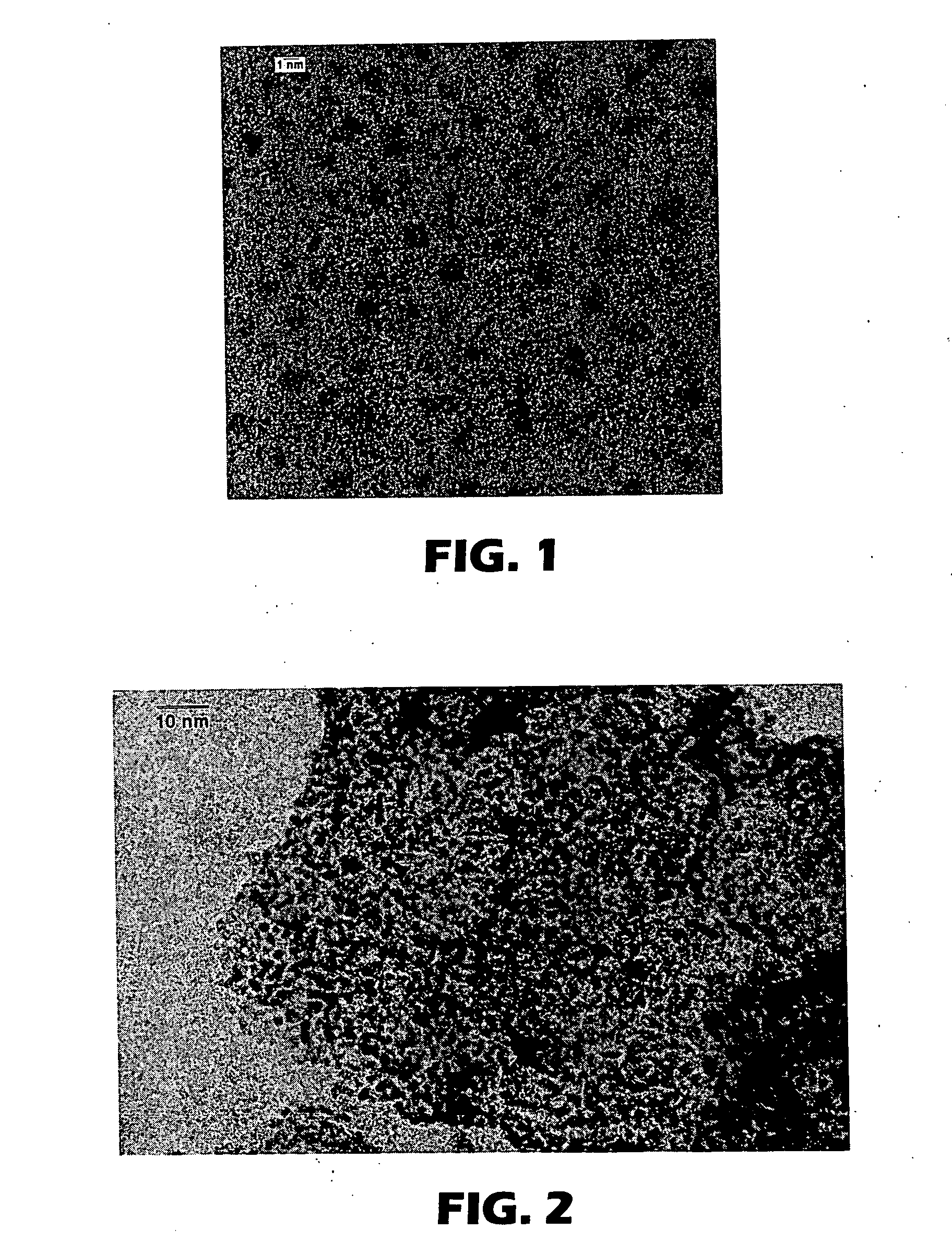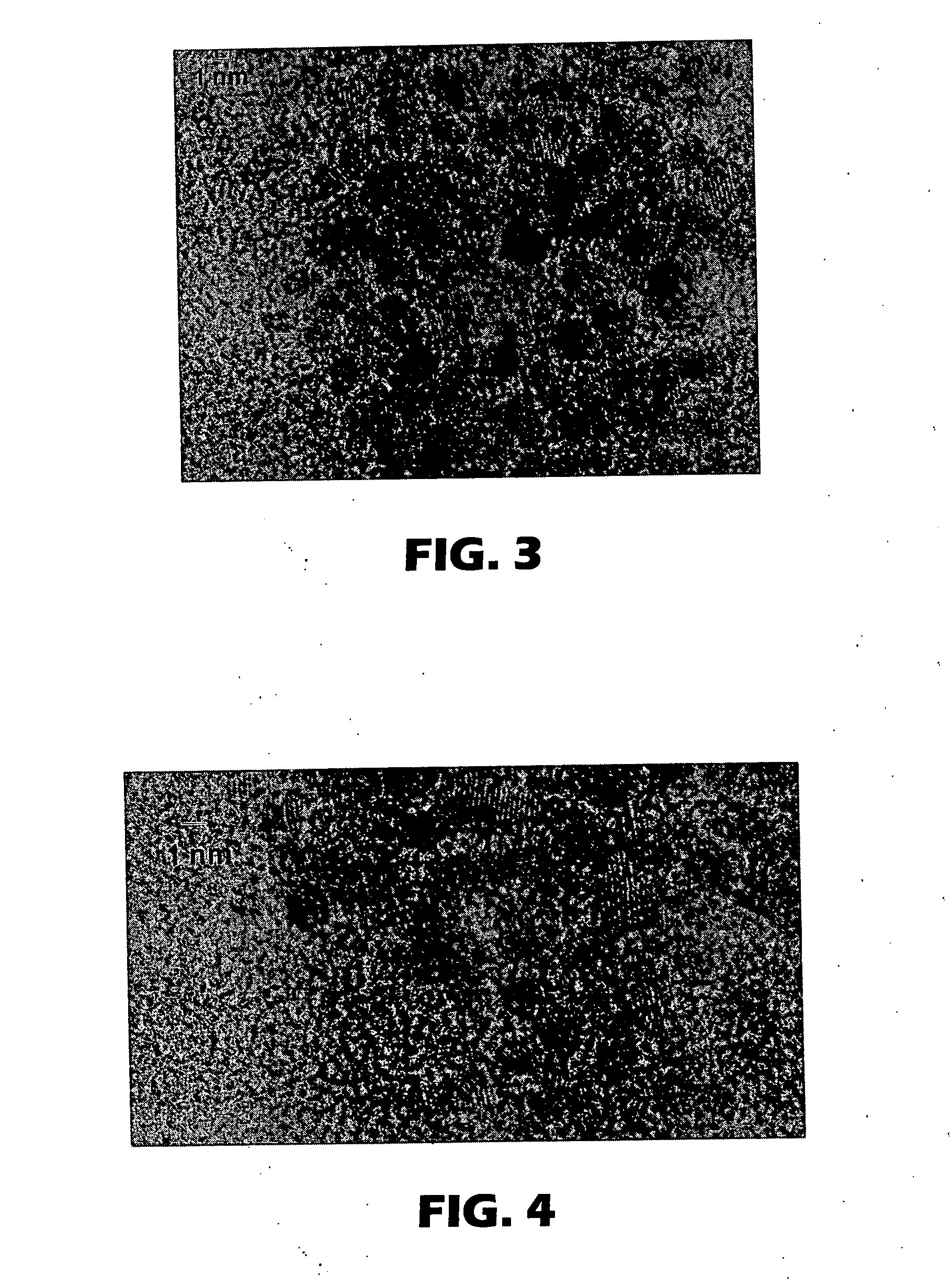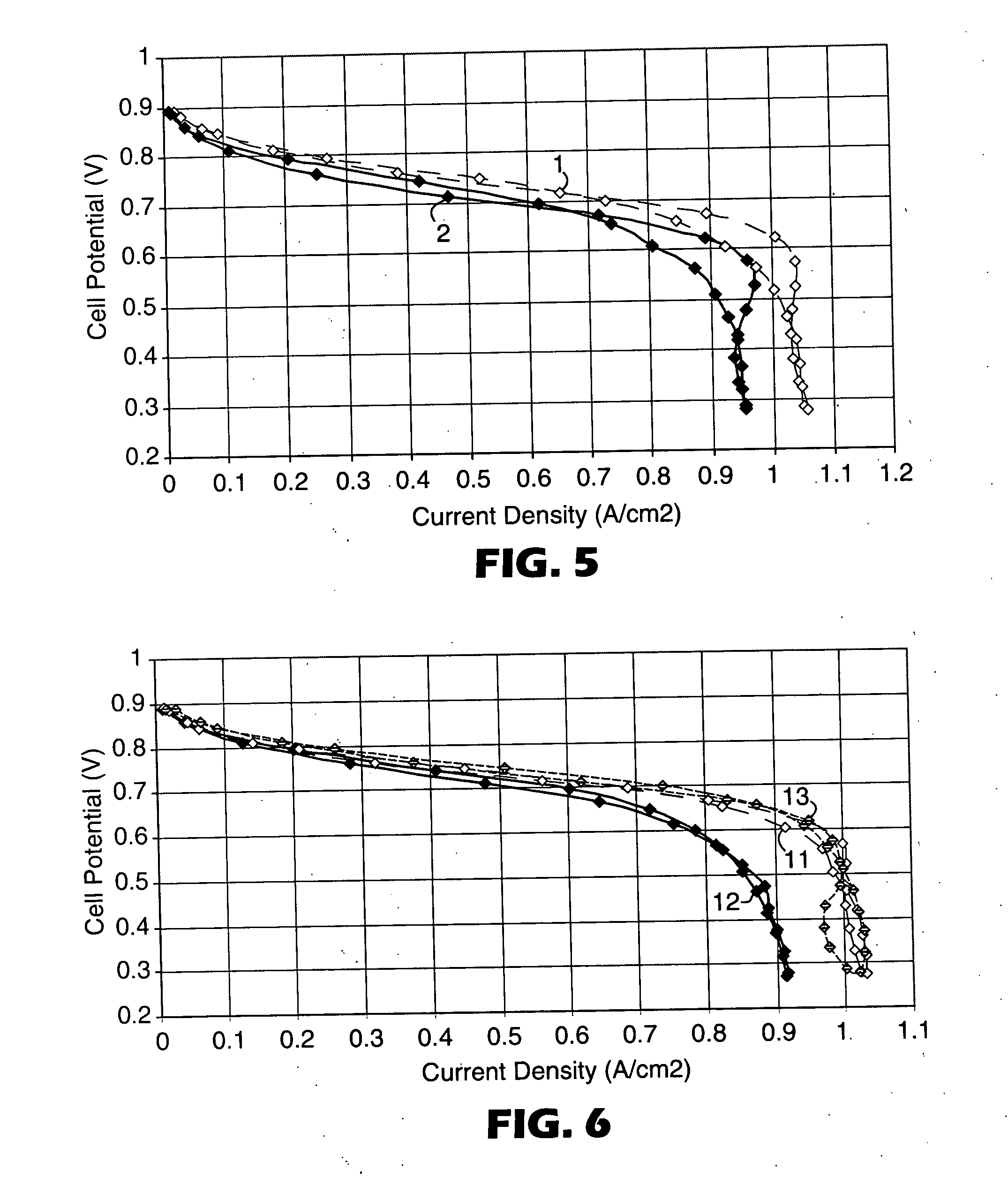Supported nanoparticle catalyst
- Summary
- Abstract
- Description
- Claims
- Application Information
AI Technical Summary
Benefits of technology
Problems solved by technology
Method used
Image
Examples
example 1 (
30% Pt / C)
Pt nanoparticles were prepared in mixed solvent as follows: 12.5 g of H2PtCl6 solution (8 wt. % aqueous solution) was added to a 200 ml flask, followed by addition of 40 ml of ethylene glycol. After stirring at room temperature for 10 minutes, 50 ml of 0.5M NaOH (in ethylene glycol) was added to the flask. The solution was heated to 160° C. under nitrogen for 3 hours. A homogeneous, dark colloid solution was obtained.
The Pt particles were supported on carbon as follows: 0.88 g of carbon black Shaw C-55 (Chevron Texaco Corp., Houston, Tex.) and 20 ml of water were then added into the dark colloid solution. This mixture was kept stirring for about 2 weeks at room temperature. Then 20 ml of 1.9 M HNO3 was added with continued stirring. The mixture was stirred for another 30 minutes, then the solid was filtered and washed with de-ionized water 3 times. The wet cake was then re-dispersed into 150 ml of water and the dispersion was stirred overnight. After purging with hydroge...
example 2 (
30% Pt / C)
Pt nanoparticles were prepared in ethylene glycol as follows: 2.0 g of H2PtCl6.xH2O (Pt content 38-41%) was added to a 500 ml flask, followed by addition of 119 g of ethylene glycol. After stirring at room temperature for 20 minutes, a NaOH solution (2.2 g NaOH in 160 g EG) was added to the flask. The solution was then heated to 160° C. under nitrogen for 3 hours. A homogeneous dark colloid solution formed.
FIG. 1 is a transmission electron micrograph of the Pt nanoparticles of Example 2 demonstrating the small size of the Pt—Ru nanoparticles. The average size is 2.0 nm with a standard deviation of 0.5 nm.
The Pt particles were supported on carbon as follows: 1.8 g of carbon black Shaw C-55 was added to the above colloid solution and the mixture was kept stirring overnight at room temperature. 45 ml of 1.9 M HNO3 was added slowly to the suspension with continued stirring. 4 hours later, the solid was filtered and washed with de-ionized water 3 times. The solid was then re...
example 3 (
50% Pt / C)
Pt nanoparticles were prepared in ethylene glycol as in Example 2.
The Pt particles were supported on carbon as follows: 0.90 g of carbon black Shaw C-55 was added to a 400 ml jar with 20 ml of ethylene glycol. The suspension was hand-sheared for 2 minutes. Then 226 g of the dark colloid Pt suspension (Pt: 875 mg) was added to the 400 ml jar. The mixture was kept stirring overnight at room temperature. 60 ml of 1.9 M HNO3 was added to the suspension very slowly with continued stirring. The mixture was stirred overnight, then the solid was filtered and washed with de-ionized water 3 times. The solid was then re-dispersed into 350 ml water and the dispersion was kept stirring for 2 hours. The solid was then filtered and washed with copious amount of de-ionized water. The composition of wet cake was estimated as 12% Pt, 12% carbon and 76% water (49.3% Pt loading on catalyst).
FIG. 2 is a transmission electron micrograph of the carbon-supported Pt nanoparticles of Example 3 d...
PUM
| Property | Measurement | Unit |
|---|---|---|
| Temperature | aaaaa | aaaaa |
| Fraction | aaaaa | aaaaa |
| Fraction | aaaaa | aaaaa |
Abstract
Description
Claims
Application Information
 Login to View More
Login to View More - R&D
- Intellectual Property
- Life Sciences
- Materials
- Tech Scout
- Unparalleled Data Quality
- Higher Quality Content
- 60% Fewer Hallucinations
Browse by: Latest US Patents, China's latest patents, Technical Efficacy Thesaurus, Application Domain, Technology Topic, Popular Technical Reports.
© 2025 PatSnap. All rights reserved.Legal|Privacy policy|Modern Slavery Act Transparency Statement|Sitemap|About US| Contact US: help@patsnap.com



